I recently came upon resource created in 1907 during a trans-Klamath adventure to explore the region and document its plants. Willis Jepson’s Siskiyou Expedition began in Yreka on July 1st and ended back in Etna on July 25th. Over that time the expedition team traveled from the eastern Klamath to the coast—and back again—using a combination of routes including poorly developed roads, the Kelsey Trail, river corridors, and portage boats guided by Karuk men. I encourage you to read more of Jepson’s journal and his colorful descriptions of the plants and places along the way. The journal offers an ecologist’s view, 110 years back, to a northwest California vastly different than today.

This is the country of the Klamath Indians. It is truly a frontier country. There are not only no railroads but no roads. A wagon would be as strange a sight to the native inhabitants of these parts.
Willis Jepson, July 8th, 1907.
Our trip across the Klamath
In August of 2020, a group of COVID-Bubble-Botanists embarked on a far less strange journey to traverse the Klamath Mountain Geomorphic Province, swim, botanize, seek out big trees, and relive the botanical adventure Jepson and his team experienced a century earlier. Jenn Yost and Matt Ritter traveled north from Cal Poly San Luis Obispo with their grad students past and present. We were also joined by Jared Farmer, history professor and author, from the University of Pennsylvania. We had a blast, stayed cool in the rivers, and even found time to botanize. What follows are a selection of pictures and descriptions from our trip. Enjoy.

More resources
- Link to all Willis Jepson’s translated field journals
- Downloadable PDF of the Siskiyou Expedition (Copyright © 2009 Regents of the University of California)
Photo Journal

Soaking in the biological diversity around East Boulder Lake. 
Foxtail pine grove against the approaching storm. 
Showy Raillardella (Raillardella pringlei) 
Swimming on the South Fork of the Salmon. 
Jared Farmer joined us and signed my copy of Trees in Paradise. 
Matt Ritter diving into Dillion Creek. 
Largest circumfernce Douglas-fir known in California at 31′ 1″. 
Views across the Klamath Mountains. 
Sunset with Mordor below. 
The Crew in the Red Buttes Wilderness. 
Botanizing along the Bigfoot Trail. 
Marvelous lichen mustaches. 
One of the largest Douglas-firs in Oregon. 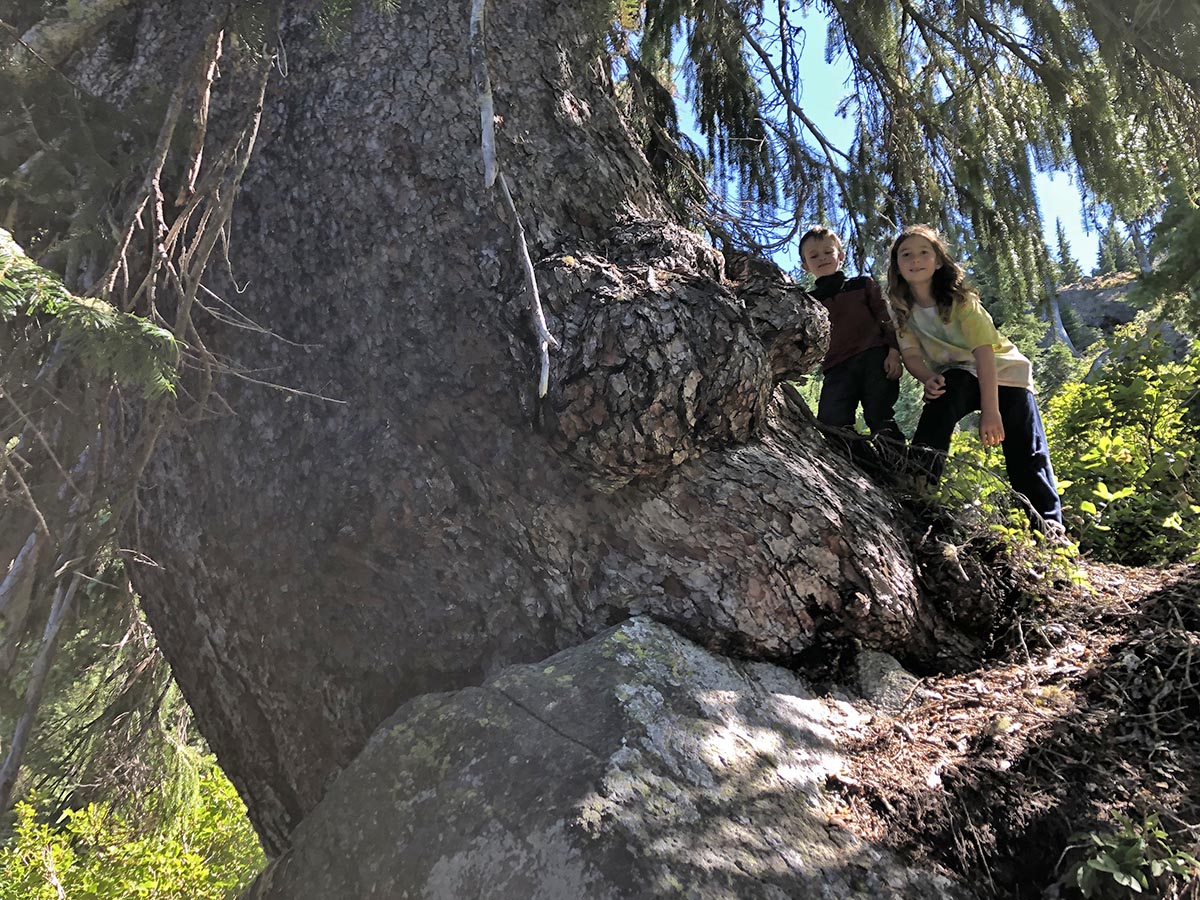
Oregon champion Brewer spruce.
Want to learn more about the Klamath Mountains?
Click the image below to stay tuned.

This is another fun and great post, and I have enjoyed your travels and explorations for years. Apropos of honoring nature, and without wanting to come off as snotty, I humbly suggest not bringing dogs on wilderness trips, esp off-leash. The scent, sign and behavior of dogs disturbs wildlife; pets should stay in their proper domestic environment.
Thanks for the kind words Fred. I agree about dogs in the wilderness but the basin we visited is also full of cows right now — which are much more impactful.
I have a lasting negative memory of cattle on the trail in the Russian Wilderness, can’t wait till they get them out of there for good!
Dear Fred, I beg to differ from your Eurocentric view of wilderness. Dogs have been a part of the Klamath Basin biome for more than seven thousand years as evidenced by the work at Nightfire Island. The report contains one of the most complete pollen which records of the region, giving knowledge of the habitat and climate changes since Mount Mazma blew it’s top and collapsed. The Corp of Discovery members preferred dog to salmon while traversing the Columbia River. Take care, Joel Ziegler https://openlibrary.org/books/OL2347401M/Nightfire_Island
I have mixed feelings about dogs in the wilderness. On the one hand I enjoy seeing and photographing the wildlife – especially bears – which dogs tend to scare away. And… I’ve had some nasty run-ins with vicious dogs on several instances attacking my wife and my niece and nephew. One dog in particular on a trip into Caribou Basin several years ago attacked my wife and did a lot of damage to her left arm. Unfortunately I had to shoot the dog (a pit bull) because we could not pry him off. People always think their dogs are friendly and “wouldn’t hurt a flea” but that’s not always the case. I honestly prefer that people leave their dogs at home. On the other hand – if dogs are kept leashed I think that’s ok.
Hi Joel, I see modern domestic dogs, who often as not are off-leash on trails, as one step on the slippery slope of multiple use, the next person will find a way to justify mountain bikes, then ATVs, cows, boats, and on down the line; the whole point of “wilderness” is to have an untrammeled by man area. You could put dogs in with horses as historic uses, but for folks like me who would like to see some wildlife, I’d prefer dogs get left home. Are you saying a Eurocentric view of wilderness is too pure and the great outdoors should be more whatever people want?
Hello Fred, Get ready wolves are coming back. Words have meaning, you are asking for a trammeled region which you wish to call wilderness. Untrammeled means without restriction. North American dogs have been traced to Eurasian gray wolves like other dogs and have a presence of 10,000 years before present in Utah and in the Klamath Basin at Nightfire Island 7,000 years BP. Wilderness as a Federal set aside is over represented by high elevation areas and gap analysis shows the most unrepresented biome is riparian forest. I am saying the Eurocentric view does not account for more than ten thousand years of occupation and use, camas being only one of the plants cultivated. It is not pure, it is false. Thomas Jefferson’s first commission to explore the Louisiana Purchase went to John Ledyard (the first colonist to view the Pacific Coast while sailing with Cook) who undertook the mission with two dogs. He also holds the first American copyright. If you’re interested in seeing wildlife find a spring, set up a tree stand to view the spring and trails in and out then wait, wait, wait listen and enjoy … oh yeah leave the dog at home and do this by yourself. Joel